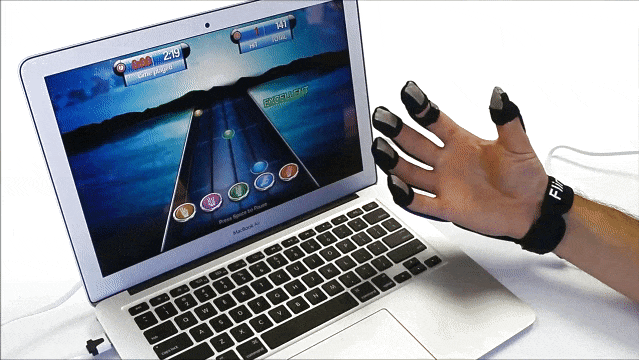Last updated on May 4, 2022
Music therapy can be a powerful addition to any stroke survivor’s rehabilitation regimen, and it provides a wide variety of benefits. Music helps stimulate multiple regions of the brain, and when it is incorporated into rehabilitative activities, it can have a significant impact on stroke recovery.
To help you learn how music therapy boosts physical and psychological healing after stroke, this article will discuss:
What Is Neurologic Music Therapy?
Neurologic music therapy utilizes music, rhythm, and beat to help retrain the brain. This is appealing for stroke survivors because rewiring the brain, a process formally known as neuroplasticity, is the essence of recovery.
Through neuroplasticity, the brain can make incredible adaptive changes, enlisting healthy areas of the brain to control functions that were previously controlled by the areas of the brain affected by stroke. This is what creates the opportunity for survivors to recover affected functions. Music can help with this process, and the benefits of music therapy are substantial and wide-ranging.
Before we further discuss the benefits of music therapy for stroke survivors, it’s important to know that every stroke is different, and therefore every recovery is different. Not all survivors will be addressing the same functions during music therapy, which is why your music therapist will evaluate your unique abilities and select various activities that are best suited for you.
Some of these activities may involve listening to music, creating music, or moving your body in sync with music. It all depends on what abilities you want to target and improve.
To gain a more comprehensive understanding of music therapy, watch the video below:

7 Benefits of Music Therapy for Stroke Patients
Neurological music therapy can help stroke survivors recover a wide range of functions including but not limited to movement, speech, and cognition. For example, if an individual is relearning how to walk after a stroke, a therapist may use a musical beat to help pace their steps.
Here are some of the major benefits of music therapy for stroke patients:
1. Promotes improved gait (walking) patterns
One of the most common secondary effects of a stroke is hemiparesis, which involves weakness on one side of the body. Almost 80% of survivors struggle with hemiparesis, which often affects their ability to walk.
Music therapy is able to address affected gait patterns through a technique called rhythmic entrainment. This technique involves synchronizing movement to a rhythm.
For example, a music therapist may play specific music or use the steady beat of a metronome to help stroke survivors improve their walking speed or other characteristics of their gait. Although this may sound like a simple practice, it’s proven to improve stride length and timing between steps.
2. Improves affected hand functions
Music therapy can also help improve hand functions, such as strength, range of motion, and dexterity. The auditory stimulation used during music therapy can help prepare the brain to anticipate movement. This improves muscle activation patterns and can also influence physiological changes in heart rate, blood pressure, and muscle tension.
Flint Rehab’s MusicGlove, a music-based neurorehab device, uses hand movements synchronized with music to improve hand functions. This utilizes the benefits of both auditory stimulation and rhythmic entrainment for effective and engaging hand therapy.
3. Helps improve speech for individuals with aphasia
Sometimes language and communication are affected by a stroke. This often occurs when the left hemisphere has been affected, which is where the language center of the brain resides. For example, a left hemisphere stroke may result in aphasia, a condition that impairs one’s ability to produce and/or understand speech.
To recover speech and language skills, therapists may recommend melodic intonation therapy, or “singing therapy.” This type of music therapy involves teaching individuals how to speak again through the act of singing.
While speech is a function usually regulated by the left side of the brain, singing is regulated by the right. This means that individuals that struggle with speech can often access the ability to sing words, even if they are unable to say words. Through this type of music therapy, survivors can promote neuroplasticity and encourage the reorganization of speech functions in the brain. Watch how singing therapy helped a stroke survivor improve his speech in the video below:

4. Boosts cognitive functions
Along with movement and speech, music therapy can also help with cognitive recovery in areas such as memory and attention after stroke. Studies have found that listening to music for at least an hour per day helped stroke survivors improve verbal memory and focused attention (compared to those who only listened to audio books or received no listening).
One way that a stroke can affect attention is through a secondary effect known as hemispatial neglect. With this condition, survivors lose the ability to notice things in the environment on their affected side. For example, a survivor with a right hemisphere stroke (which affects the left side of the body) would likely have left neglect if they consistently struggle to notice you when approach from the left side.
Fortunately, another study found that listening to classical music helped improve left neglect in stroke survivors. Although the study was small, music therapy is certainly worth trying since listening to music is an accessible, affordable therapy technique.
5. Helps to alleviate post-stroke depression
Aside from these physical benefits, music therapy is also proven to help improve your mood and reduce feelings of depression after stroke. This is important as nearly one in every three survivors struggle with post-stroke depression.
Often, individuals with depressive disorders have low levels of dopamine, which is a neurotransmitter that primarily impacts motivation and reward perception. When you listen to music, the brain releases more dopamine as you subconsciously anticipate climaxes in the music, which can help improve your mood. Music therapy is most effective when used in conjunction with more conventional therapy treatments for post-stroke depression.
6. Improves post-stroke anxiety
Post-stroke anxiety affects one out of five stroke survivors. Music therapy can help improve anxiety symptoms by reducing cortisol, a stress hormone. One study has demonstrated that simply listening to music can reduce anxiety, even in the acute stages of rehabilitation.
With this in mind, music therapy can be an excellent way to provide psychological care after stroke.
7. Promotes a powerful mechanism for recovery
As we mentioned earlier, neuroplasticity is the essence of recovery. It allows the brain to rewire itself by creating and strengthening neural connections.
To harness neuroplasticity to the best of your ability, it helps to focus on “massed practice.” This refers to practicing an activity with high repetition to help stimulate brain rewiring. The more you perform a specific action, the better the brain gets at executing that function. The saying “practice makes perfect” comes from this phenomenon.
Therefore, when music therapy is combined with therapeutic exercises that are repeated on a consistent basis, it helps engage neuroplasticity and rewire the brain. For example, individuals that are interested in improving movement can benefit from practicing physical therapy exercises in combination with music therapy on a regular basis; or individuals that wish to improve speech can benefit from practicing singing therapy on a regular basis.
Passively listening to music alone helps activate neuroplasticity; and when music is combined with other therapeutic activities, it maximizes neuroplasticity to help boost recovery after stroke.
Now that you understand the various ways music therapy can help promote recovery after stroke, let’s explore a practical at-home method for applying music therapy to your rehabilitation routine.
At-Home Music Therapy for Stroke Patients
Since specially-trained music therapists are not always readily available, time with a music therapist is both valuable and often limited. Some survivors are fortunate enough to participate in music therapy once a week, which leaves six days in between sessions where neuroplasticity begins to wane.
To help keep the brain stimulated and maximize recovery, it’s important to continue with music therapy at home. Consistency is critical for neuroplasticity to work. One way to achieve this is to use evidence-based rehab technology that combines music with the area that you want to work on. For example, as mentioned above, the MusicGlove from Flint Rehab uses movements synchronized with music to promote hand function.
To use this rehab device, you place the glove on your affected hand and then make various pinching movements in sync with a musical game. This rhythmic entrainment helps spark neuroplasticity and rewire the brain. Furthermore, the average user accomplishes hundreds of repetitions per half hour session with MusicGlove, which further activates neuroplasticity.
MusicGlove is clinically proven to improve hand function within just two weeks when used for half an hour per day. This demonstrates the power of music, consistency, and repetition for survivors that want to improve recovery after stroke.
Understanding Music Therapy for Stroke Patients
Music therapy can serve as an effective form of treatment for stroke survivors because it is a fun and motivating way to practice high repetitions of activities that stimulate the brain. Consistently stimulating the brain encourages adaptive changes through neuroplasticity. Therefore, the more you practice, the better you’ll get.
We hope this article helped you understand how music therapy can help individuals improve their mobility, speech, cognition, and mood after stroke.


